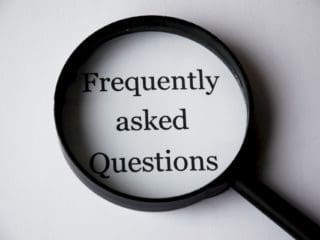The role and responsibility for Community Management and who is best placed to service it has been a debate in the marketing industry for a while.
When I read an article by Martin Waxman on the US site, Spin Sucks last week saying Community Management is a role for PR, I wanted to reply to explain the role of Community Management and how it fits within the Communications mix.
Let’s clarify what is Community Management. Community Management is the umbrella term for performing all the day-to-day activities on a social media channel or forum. This can be setting and implementing social media and communication campaigns to align with marketing strategies, writing and managing a content calendar, and responding to comments and customer queries in a timely manner. There is also the analysis of discovering what content resonates with your customers and what are the emerging issues your customers are looking for from your products and services.
So really what Martin is talking about is whether PR can deal with responding to comments and customer queries in a timely manner – which is what I like to call Community Engagement and Outreach.
Reactive and proactive engagement
Community Engagement is divided into two groups: reactive and proactive. Reactive is the types of conversations that take place on a brand’s social channels and come in the following forms: social customer care, campaign support, conversational engagement and crisis responding. Proactive is outreach to potential customers and talking to influencers, (micro, macro and celebrities).
Irrespective of which type of community engagement you are involved with, the objective of all Community Engagement is to create a human connection between the brand and the customer. We exist in a world where the customer is social savvy and expects to interact with a brand to understand its policies on social, economic and environmental factors, as well as sort out any customer issues. And of course customers expect an answer within at least one hour of posting it! All communication must be genuine and authentic and use the audience’s everyday language.
I agree that PR experts are able to respond to customers about some corporate issues, but providing customer support and being knowledgeable about the ins and outs of products and services doesn’t seem to be an appropriate use of a PR person’s time. Hence the need for Community Engagement and Outreach specialists who are trained and skilled in knowing how to respond appropriately and in a correct manner.
Working together
With that in mind, I think that PR and Community Engagement specialists should work together to ensure consistent messaging across all digital channels. In fact, smart organisations are already doing this. Consumers needs to see consistent messaging and engagement (whatever communication channel they use), and organisations should be structured to ensure this happens. By encouraging Engagement Specialists to work with PR and Marketing, the right messages can be communicated out. Everyone should work together to agree the message and then the Engagement Specialist takes the messages and ‘socialises’ it. This means making it appropriate for the social channel, using everyday language that appeals to the audience and showing the right level of empathy, but talking in the corporate tone of voice. This all adds up to ensuring the response is not robotic or overly corporate-sounding and comes across as authentic and genuine.
This is what an Engagement Specialist does every day, as they are at the heart of the community. And they are definitely not junior roles within an agency or organisation. The Engagement Specialists that work on our projects have sufficient training to ensure they understand the brand’s tone of voice and can talk to the target audience. They have the same training as those on the telephone speaking to customers.
Influencers
Where Community Engagement and PR definitely overlap is in managing influencers. Traditionally a PR area, we’re seeing this move more into Community Management, as brands encourage influencers to create their own content, showing what they really think and feel about a product or service. Again, the key is to for PR and Community Management to work together. PR could find these verify and vet these influencers to ensure they are suitable for the brand, and Community Management can monitor and track the virality of what the influencers are publishing, and the impact on the community of their content.
There are plenty of brand communication activities that we all excel at, whether we work in PR, marketing, customer support or social. I believe we should leave the specialists to do what they know best instead of trying to be all things to all people. Let’s stick to our core areas and work together, to deliver the best customer experience.






Leave a Reply